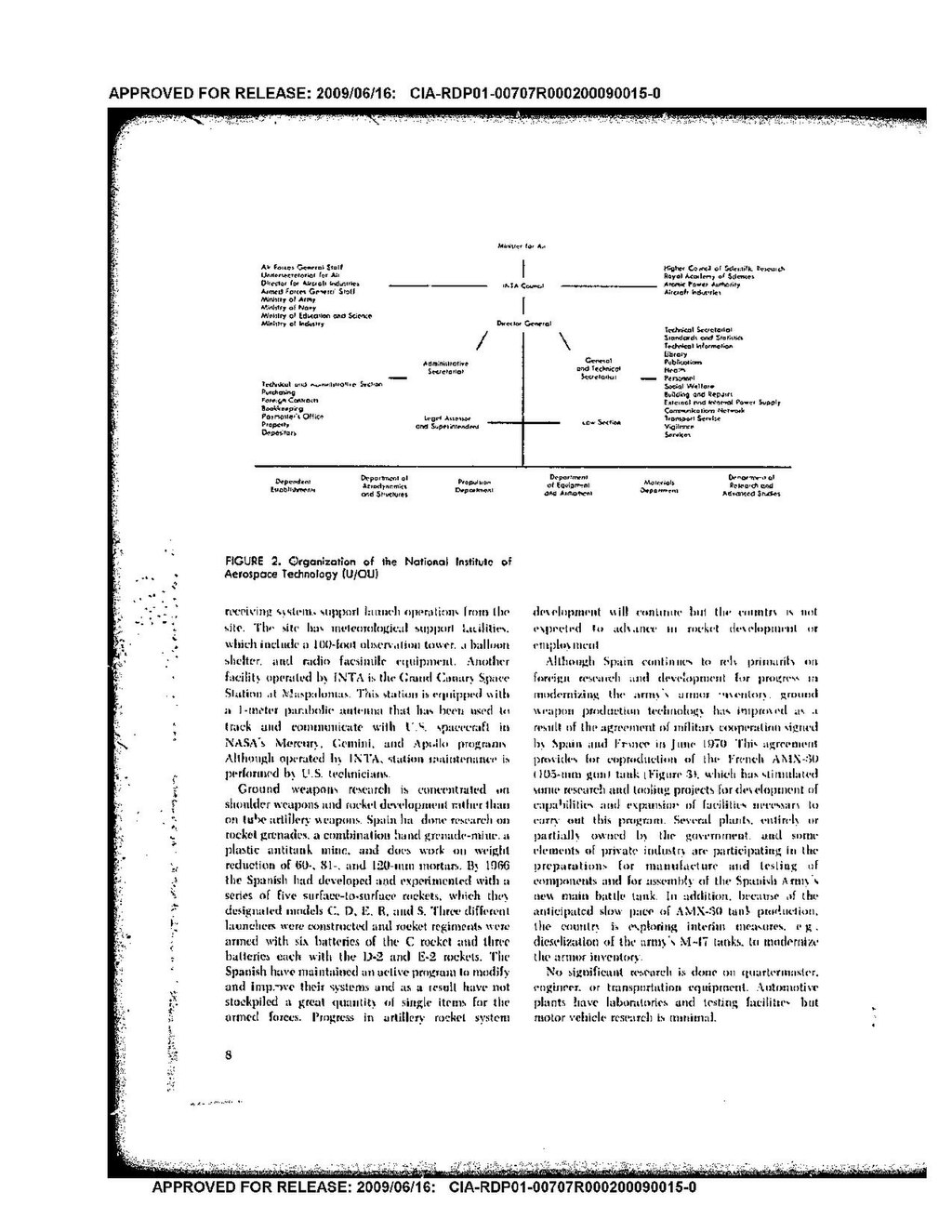APPROVED FOR RELEASE: 2009/06/16: CIA-RDP01-00707R000200090015-0
receiving systems, support launch operations from the site. The site has meteorological support facilities, which include a 100-foot observation tower, a balloon shelter, and radio scientific equipment. Another facility operated by INTA is the Grand Canary Space Station at Maspalontas. This station is equipped with a 1-meter parabolic antenna that has been used to track and communicate with US spacecraft in NASA's Mercury, Gemini, and Apollo programs. Although operated by INTA, station maintenance is performed by US technicians.
Ground weapons research is concentrated on shoulder weapons and rocket development rather than on tube artillery weapons. Spain has done research on rocket grenades, a combination hand grenade-mine, a plastic anti-tank mine, and does work on weight reduction of 60-mm, 81-mm, and 120-mm mortars. By 1966 the Spanish had developed and experimented with a series of five surface-to-surface rockets, which they designated models C, D, E, R, and S. Three different launchers were constructed and rocket regiments were armed with six batteries of the C rocket and three batteries each with the D-2 and E-2 rockets. The Spanish have maintained an active program to modify and improve their systems and as a result have not stockpiled a great quantity of single items for the armed forces. Progress in artillery rocket system development will continue but the country is not expected to advance in rocket development or employment.
Although Spain continues to rely primarily on foreign research and development for progress in modernizing the army's armor inventory, ground weapon production technology has improved as a result of the agreement of military cooperation signed by Spain and France in June 1970. This agreement provides for coproduction of the French AMX-30 (105-mm gun) tank, which has stimulated some research and tooling projects for development of capabilities and expansion of facilities necessary to carry out this program. Several plants, entirely or partially owned by the government, and some elements of private industry are participating in the preparations for manufacture and testing of components and for assembly of the Spanish Army's new main battle tank. In addition, because of the anticipated slow pace of AMX-30 tank production, the country is exploring interim measures, e.g., dieselization of the army's M-47 tanks, to modernize the armor inventory.
No significant research is done on quartermaster, engineer, or transportation equipment. Automotive plants have laboratories and testing facilities, but motor vehicle research is minimal.
8
APPROVED FOR RELEASE: 2009/06/16: CIA-RDP01-00707R000200090015-0
